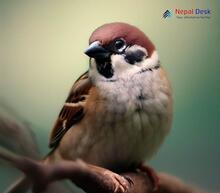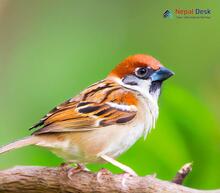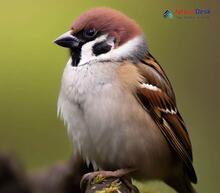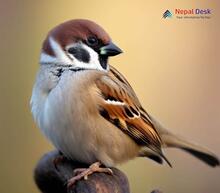The avian world is home to a remarkably diverse range of species, each with its unique characteristics and adaptations. One such captivating genus is Passer, commonly known as the sparrow. These small birds have captured the hearts of birdwatchers and nature enthusiasts across the globe. In this article, we delve deep into the origin, evolution chain, taxonomy, morphology, ecology of passerines, and their presence in Nepal.
Origin and Evolution Chain
The Passer genus is believed to have originated around 20 million years ago during the early Miocene epoch. As part of the Passeridae family within the order Passeriformes, these birds share a close evolutionary relationship with other passerines such as finches and buntings. Fossil evidence suggests that various species evolved from a single ancestral species that eventually radiated across different geographic regions.
Taxonomy
Within the Passer genus, there are approximately 28 recognized species distributed globally. The most widely known and common species include the house sparrow (Passer domesticus) and the Eurasian tree sparrow (Passer montanus). The taxonomy of sparrows is marked by a complex history due to hybridization events and the influence of human activity on their dispersion.
Morphology
Passerine sparrows are small birds with stout bodies ranging from 12-18 cm in length. They possess rounded wings suited for powerful flight and short conical bills adapted for seed-eating habits. Their plumage varies among species but generally comprises shades of brown, black, white, or grey with sexual dimorphism often present. Male sparrows typically exhibit more vibrant colors compared to their female counterparts.
Ecology
Sparrows have adapted to a wide variety of habitats from urban areas to grasslands, forests, wetlands, and even deserts. Nesting occurs in trees, shrubs, or man-made structures, and a clutch size of 3-6 eggs is common. Passerines primarily feed on seeds and grains, although they also consume insects and other small invertebrates during the breeding season.
Presence in Nepal
Nepal boasts a rich birdlife diversity with more than 850 recorded species, including several sparrow species from the Passer genus. The house sparrow and Eurasian tree sparrow are both widespread across urban settings, agricultural lands, and mixed forests of Nepal. Additionally, the Russet sparrow (Passer rutilans) is commonly found in mid-hills, and the Tibetan snowfinch (Montifringilla adamsi) in high Himalayan regions.
In conclusion, the Passer genus is a fascinating group of birds with a storied origin, intriguing taxonomy and morphology, varied ecology, and unique presence in Nepal's avian diversity. As urbanization pushes them towards potential population decline, conservation efforts are vital to preserving these enigmatic birds.




